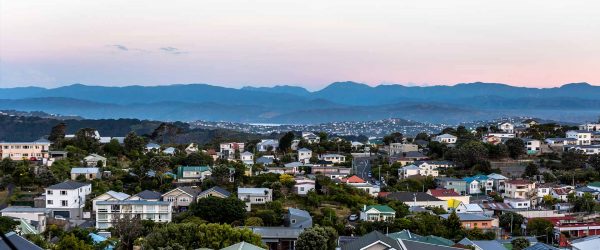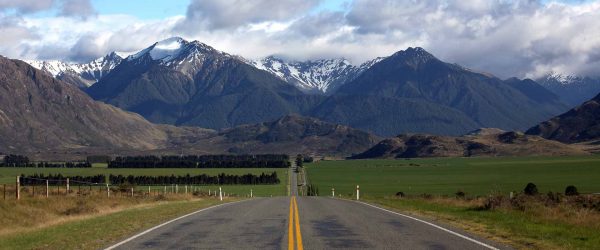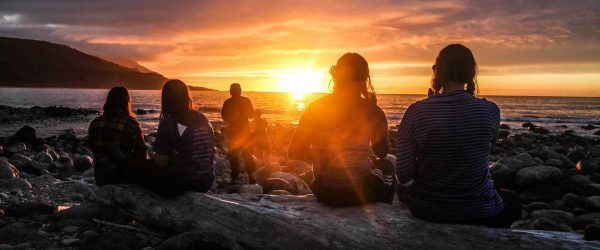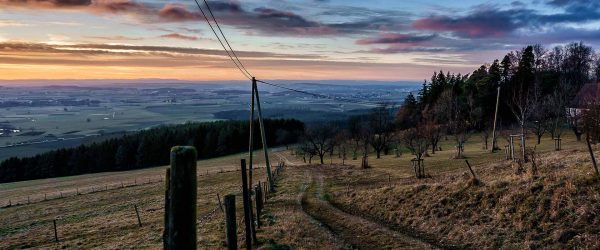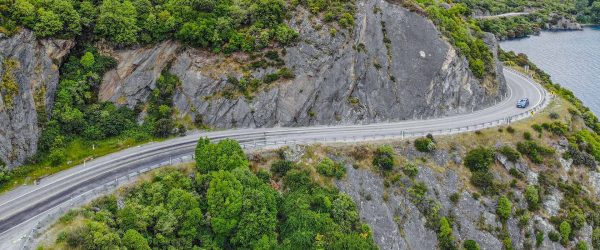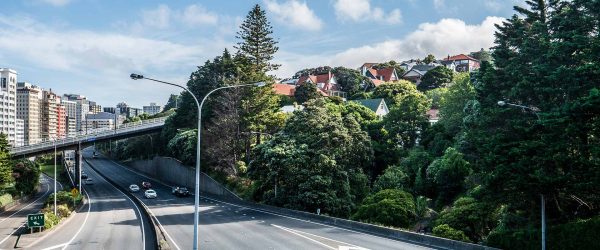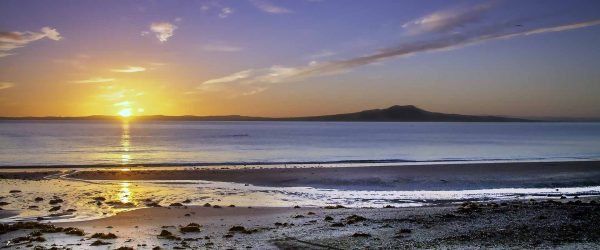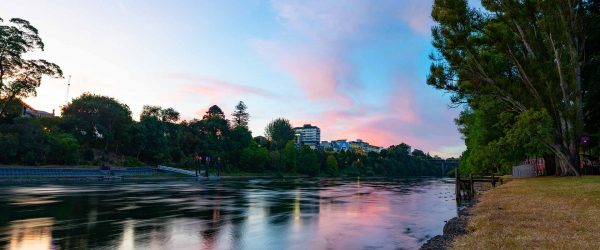De-risking Resilience
Vision
A decision-making environment for Aotearoa New Zealand that acknowledges that acting on science is sometimes difficult and many resilience decisions present significant political, professional, or institutional risks.
Project description
Currently, decision-makers have to mediate considerable institutional, professional, and political risks that arise from mitigating natural hazards, such as how sure are we? How much will it cost? Who pays? What should we prioritise?
Some of these risks can be addressed by better science, or more accurate data, but where situations are complex, uncertain, and value-laden, action is difficult and natural hazard risks may be transferred to the state and private sector, or to people, places, and future generations.
We are working to build understanding of the real-world ‘risks’ of decision making and so increase the potential of resilience science, tools, and policies from multiple areas across the challenge to have real-world impact. Our research is being conducted in two workstreams:
- In the Innovating Resilience workstream we aim to deepen the understanding of the science-policy-practice interface in Aotearoa New Zealand. We are working on case studies with central and local government stakeholders, focusing on issues such as sea-level rise and managed retreat, and testing a range of innovations and approaches to reduce the gap between resilience science and societal action.
- In the Incentivising Resilience workstream, we are exploring new ways to motivate and incentivise resilient behaviours in the context of uncertainty and multiple hazards. We are researching the economics of climate change adaptation, the economic impacts of natural hazards, and the financial instruments (such as insurance) that can be used to incentivise resilience.
Our goal is to help enable more difficult decisions to be taken, particularly those that bring considerable institutional, professional, economic and political risks for those making them.
Resource Outputs from this project
Insurance and disaster recovery
This brief focusses on insurance issues in Aotearoa New Zealand related to disaster recovery.
Presentation Slides, ‘De-Risking Resilience’ Webinar
Understanding real-world decision-making difficulties and testing strategies to ‘de-risk’ putting resilience science into practice and outcomes.
Navigating Adaptive Futures: Analysing the scope of political possibilities for climate adaptation
This research analyses public submissions made on New Zealand’s first draft National Adaptation Plan to understand how future climate adaptation is framed and imagined by different groups.
Past experience of drought, drought risk perception, and climate mitigation and adaptation decisions by farmers in New Zealand
While all farmers perceived increased risk, age, gender, and education influence how future drought risk is perceived by farmers.
Developing and testing a cost-effectiveness analysis to prioritize green infrastructure alternatives for climate change adaptation
J.R. Junqueira, S. Serrao‐Neumann, I. White (2023) Developing and testing a cost-effectiveness analysis to prioritize green infrastructure alternatives for climate change adaptation. Water and Environment Journal, Volume 37, Issue 2. https://doi.org/10.1111/wej.12832
Using green infrastructure as a social equity approach to reduce flood risks and address climate change impacts: A comparison of performance between cities and towns
Which types of green infrastructure, and in which combinations, can most effectively reduce the impact of extreme weather events?
What is generated through rupture?
How specific and intense episodes of change can influence and be co-opted by politics, often in ways that lean toward oppression and violence.
Re-Imagining relationships with space, place, and property: The story of mainstreaming managed retreats in Aotearoa-New Zealand
The evolution and changing perceptions of managed retreat in Aotearoa New Zealand.
Enhancing disaster risk governance for small-scale recurring disasters through pre-determining emergency response and recovery entry points for improved social outcomes
This paper investigates how response and recovery approaches in New Zealand account for small-scale recurring disasters, and how these could be improved to support adaptation.
Mainstreaming Managed Retreat in Aotearoa New Zealand
How have retreats gradually evolved, from being reactive and unmanaged towards being a strategic part of our national risk management framework?
Attributions for extreme weather events: science and the people
McClure, J., Noy, I., Kashima, Y. & Milfont, T.L. (2022). Attributions for extreme weather events: science and the people. Climatic Change 174, 22. https://doi.org/10.1007/s10584-022-03443-7
Green or grey pandemic recovery? Revealing the blue–green infrastructure influences in Aotearoa-New Zealand’s “Shovel Ready” Covid-19 response
Hanna, C., White, I., Xinyu, F., Crossland, K., Serrao-Neumann, S. (2022). Green or grey pandemic recovery? Revealing the blue–green infrastructure influences in Aotearoa-New Zealand’s “Shovel…
Reflections on Urban Crises, the Science-Policy Interface and the Importance of “Tiny Revolts”
White, I. (2022) Reflections on Urban Crises, the Science-Policy Interface and the Importance of “Tiny Revolts”. Urban Policy and Research, 40 (3):195-205. https://doi.org/10.1080/08111146.2022.2093183
Infrastructure in times of exception: Unravelling the discourses, governance reforms and politics in ‘Building Back Better’ from COVID-19
White, I., Legacy, C., & Haughton, G. (2022). Infrastructure in times of exception: Unravelling the discourses, governance reforms and politics in ‘Building Back Better’ from…
Retrofitting an emergency approach to the climate emergency: A study of two climate emergency declarations in Aotearoa New Zealand.
Nissen S, Cretney R. Retrofitting an emergency approach to the climate crisis: A study of two climate emergency declarations in Aotearoa New Zealand. Environment and…
Managed retreats by whom and how? Identifying and delineating governance modalities
Christina Hanna, Iain White, Bruce C. Glavovic, Managed retreats by whom and how? Identifying and delineating governance modalities, Climate Risk Management, Volume 31, 2021. https://doi.org/10.1016/j.crm.2021.100278
Wellbeing after a managed retreat: Observations from a large New Zealand program
Hoang T, Noy I. 2020. Wellbeing after a managed retreat: Observations from a large New Zealand program. International Journal of Disaster Risk Reduction. 48:101589. doi:10.1016/j.ijdrr.2020.101589.
Resilience and housing markets: Who is it really for
Squires G, White I. 2019. Resilience and housing markets: who is it really for? Land Use Policy. 81:167-174. doi:10.1016/j.landusepol.2018.10.018.
Bloated bodies and broken bricks: Power, ecology, and inequality in the political economy of natural disaster recovery
Sovacool BK, Tan-Mullins M, Abrahamse W. 2018. Bloated bodies and broken bricks: power, ecology, and inequality in the political economy of natural disaster recovery. World…
Regressivity in Public Natural Hazard Insurance: a Quantitative Analysis of the New Zealand Case
Owen S, Noy I. 2019. Regressivity in public natural hazard insurance: a quantitative analysis of the New Zealand case. Economics of Disasters and Climate Change.…
The Uncertainty Contagion: Revealing the Interrelated, Cascading Uncertainties of Managed Retreat
Hanna C, White I, Glavovic B. 2020. The uncertainty contagion: revealing the interrelated, cascading uncertainties of managed retreat. Sustainability. 12(2):736. doi:10.3390/su12020736
Measuring the impact of insurance on urban earthquake recovery using nightlights
Nguyen CN, Noy I. 2019. Measuring the impact of insurance on urban earthquake recovery using nightlights. Journal of Economic Geography. 20(3):857-877. doi:10.1093/jeg/lbz033.
Comparing earthquake insurance programmes: how would Japan and California have fared after the 2010–11 earthquakes in New Zealand?
Nguyen CN, Noy I. 2020. Comparing earthquake insurance programmes: how would Japan and California have fared after the 2010–11 earthquakes in New Zealand? Disasters. 44(2):367-389.…
Centering Culture in Public Engagement on Climate Change
Munshi D, Kurian P, Cretney R, Morrison SL, Kathlene L. 2020. Centering culture in public engagement on climate change. Environmental Communication. 14(5):573-581. doi:10.1080/17524032.2020.1746680.
Planning in the post-pandemic era
Haughton G, White I, Pinto N. 2020. Planning in the post-pandemic era. Town & Country Planning. April/May:138-140.
Resilience Governance: Enabling transformative societal choices in the Anthropocene.
Lawrence J, White I, Glavovic B, Schneider P. 2017. Resilience governance briefing note. Lower Hutt (NZ): Resilience to Nature's Challenges. 3 p.
Reducing risk through the management of existing uses: Tensions under the RMA.
Grace E, France-Hudson B, Kilvington M. 2019. Reducing risk through the management of existing uses: Tensions under the RMA. Lower Hutt (NZ): GNS Science. 10…
Managed retreat in practice: Mechanisms, opportunities and challenges for implementation
Hanna C, White I, Glavovic B. 2019. Managed retreat in practice: mechanisms and challenges for implementation. In. Oxford Research Encyclopedias: natural hazard science. Oxford University…
Managed retreat in New Zealand: revealing the terminology, approaches and direction of local planning instruments.
Hanna, C., White, I., Glavovic, B. (2017). Managed retreat in New Zealand: revealing the terminology, approaches and direction of local planning instruments. Report for the…
Measuring the Economic Risk of COVID-19 in Developing Countries: Where is it Higher?
Noy I, Doan N, Ferrarini B, Park D. 2020. Measuring the economic risk of Covid-19. COVID Economics. 3:103-118.
Earthquake-induced transportation disruption and economic performance: The experience of Christchurch, New Zealand
Yonson R, Noy I, Ivory VC, Bowie C. 2020. Earthquake-induced transportation disruption and economic performance: the experience of Christchurch, New Zealand. Journal of Transport Geography.…
Insurance as a Double-Edged Sword: Quantitative Evidence from the 2011 Christchurch Earthquake.
Poontirakul P, Brown C, Seville E, Vargo J, Noy I. 2017. Insurance as a double-edged sword: quantitative evidence from the 2011 Christchurch earthquake. The Geneva…
Earthquake‐strengthening policy for commercial buildings in small‐town New Zealand
Filippova O, Noy I. 2020. Earthquake-strengthening policy for commercial buildings in small-town New Zealand. Disasters. 44(1):179-204. doi:10.1111/disa.12360.
Who cares? Future sea-level-rise and house prices
Filippova O, Nguyen C, Noy I, Rehm M. 2020. Who cares? Future sea level rise and house prices. Land Economics. 96(2):207-224. doi:10.3368/le.96.2.207
Projecting the effect of climate change on residential property damages caused by extreme weather events.
Pastor-Paz J, Noy I, Sin I, Sood A, Fleming-Munoz D, Owen S. 2020. Projecting the effect of climate change on residential property damages caused by…
Measuring the Economic Risk of COVID‐19
Noy I, Doan N, Ferrarini B, Park D. 2020. Measuring the economic risk of COVID-19. Global Policy. 11(4):413-423. doi:10.1111/1758-5899.12851.
Paying a Price of Climate Change: Who Pays for Managed Retreats?
Noy I. 2020. Paying a price of climate change: who pays for managed retreats? Current Climate Change Reports. 6(1):17-23. doi:10.1007/s40641-020-00155-x.
Defining Build-Back-Better after Disasters with an Example: Sri Lanka’s Recovery after the 2004 Tsunami.
Noy I, De Alwis D, Ferrarini B, Park D. 2020. Defining build-back-better after disasters with an example: Sri Lanka's recovery after the 2004 Tsunami. International…
Shifting discourses of nature in participatory processes for environmental management
A qualitative analysis of an archive of historical policy and planning documents and interviews.

